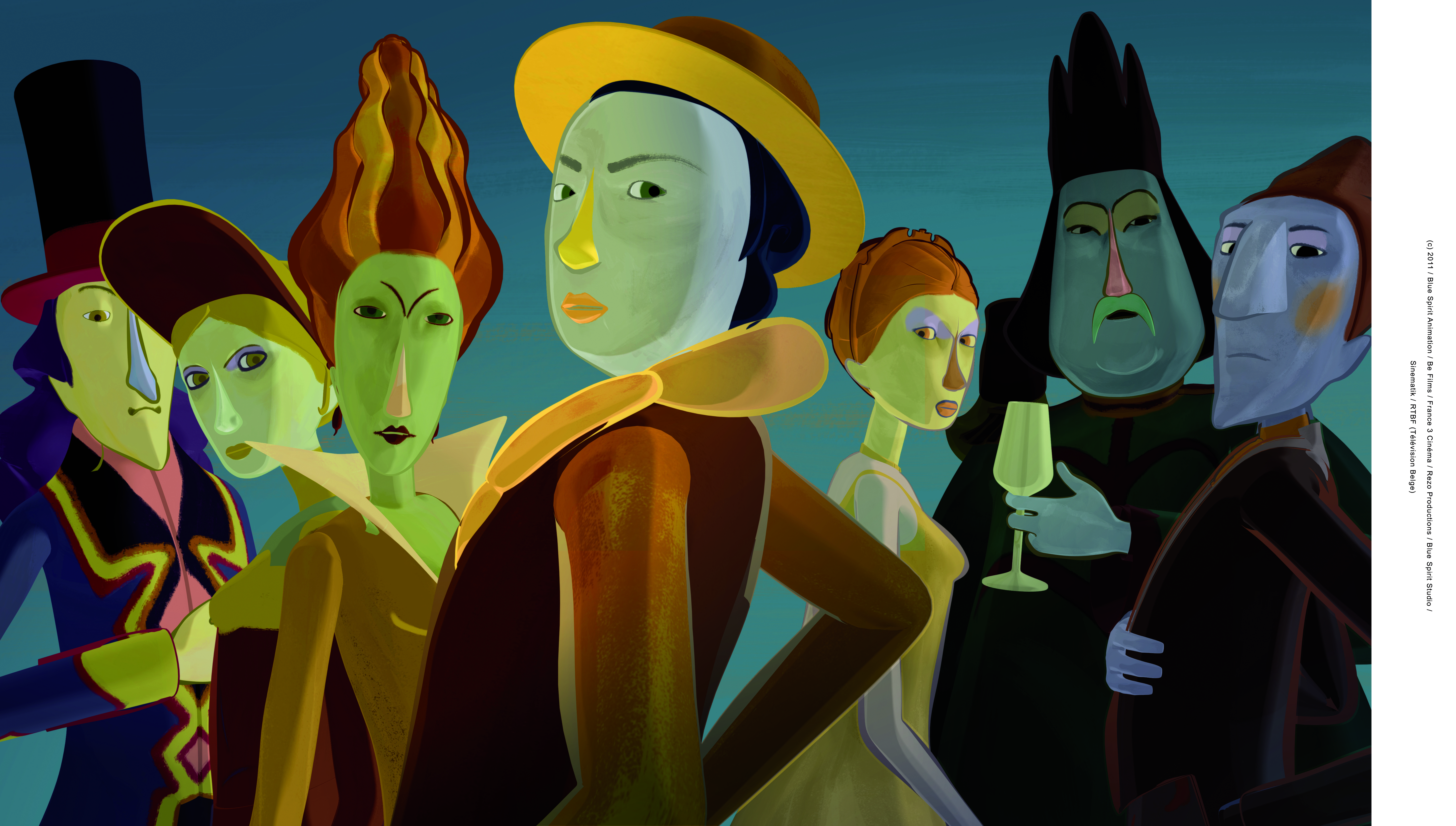The Painting
Opens Fri., June 28 at Varsity. Not rated. 78 minutes.
Suitable for older kids, Jean-Francois Laguionie’s animated French parable of class distinction takes place in a fairy-tale setting of castles, balls, and enchanted forests. There are three social castes: the colorful Alldunns, the Halfies, and the Sketchies, whose names correspond to their state of painterly completion. At the top of the pecking order, the smug Alldunns derive their authority from a divine Painter who’s departed the scene. Relegated to the garden are the imperfect Halfies (kind of like mulattos), while the sad, skeletal Sketchies are banished to the forest like savages. (“They should be tossed in the trash,” sniffs one castle dweller.) Naturally there’s a cross-class romance; there follows an Oz-like quest through the jungle, where giant, sentient Dr. Seuss-like flowers aid our heroes. (The dialogue’s dubbed into English, so the story’s easy to follow.) But where the film turns ingenious is the point our four fugitives reach the end of the known world—a membrane of canvas that divides them from the Painter’s studio.
What ensues is a clever twist on The Purple Rose of Cairo and Buster Keaton’s Sherlock, Jr. The main characters escape from one painting to the next, picking up new friends along the way and providing an art-history survey of early-20th-century styles. Post-Impressionism yields to early Cubism; there are allusions to Picasso and Modigliani; and the film’s flatly crayoned animation style even ventures into CG. (You could readily see the premise being adapted to Pixar.)
Still, The Painting ultimately runs thin on ideas, and the allegory’s a little too heavy for adult viewers. Must Ramo’s nose be so hugely Semitic? Must Lola be so conspicuously African-featured? The Sketchies become all-purpose signifiers for the oppressed: like Jews during the Holocaust, Bosnians during the ’90s, or starving immigrants seeking refuge in Fortress Europe today. The fairy tale becomes a bit too freighted, and some of the charm is lost. However, the French do love a good revolution, and when the Alldunns’ chromatic fascism is finally toppled, it’s not bombs but daubs of paint that create a fair new multihued society.
bmiller@seattleweekly.com








